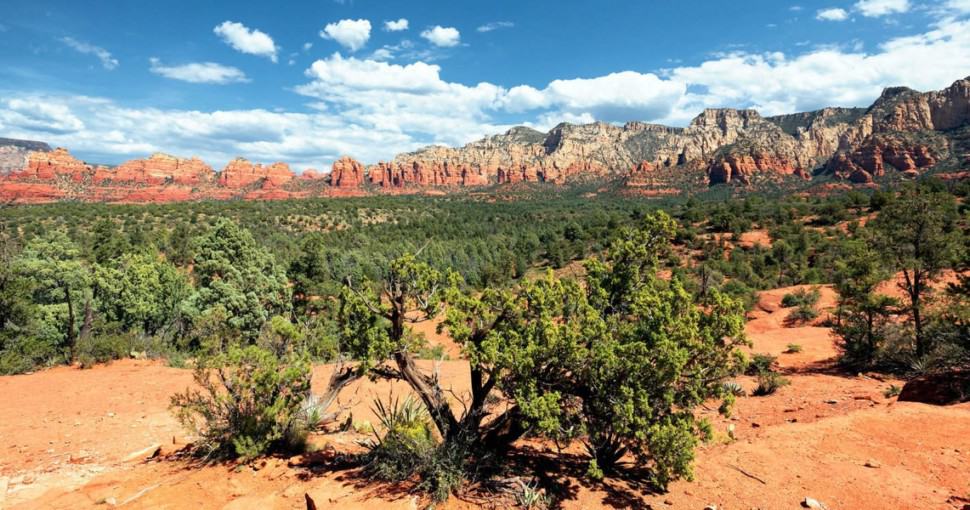“Evergreen trees in Arizona? Yes, it is possible! It’s not as crazy as you might think. There are many evergreen trees that live and grow here year round. As a matter of fact, some of the most beautiful specimens thrive in the desert southwest.”
Contents
- 1. African Sumac (rhus lancea)
- 2. American Arborvitae (thuja occidentalis)
- 3. Arizona Cypress (cupressus arizonica)
- 4. Mulga (acacia aneura)
- 5. Texas Olive (cordia boissieri)
- 6. Arizona Madrone (arbutus arizonica)
- 7. Rocky Mountain Juniper (juniperus scopulorum)
- 8. Desert Ironwood (olneya tesota)
- 9. Colorado Pinyon (pinus edulis)
- 10. Texas Ebony (ebenopsis ebano)
- 11. Honey Mesquite (prosopis glandulosa)
- 12. White Fir (abies concolor)
- 13. Brazilian Pepper Tree (schinus terebinthifolia)
Arizona is usually associated with desert landscape, but there are some areas of the state that get enough rain to support lush forests. One such area is near Flagstaff, where the largest stands of evergreen trees in Arizona thrive on the slopes of several mountains. Check out some of the most common trees in Arizona.
The San Francisco Peaks are home to both Douglas firs and Ponderosa pines, which grow up to 100 feet tall. These trees make for excellent Christmas tree alternatives if you want something different than a typical pine or fir tree. They also make for great shade during summer months when temperatures can top 130 degrees Fahrenheit!
1. African Sumac (rhus lancea)
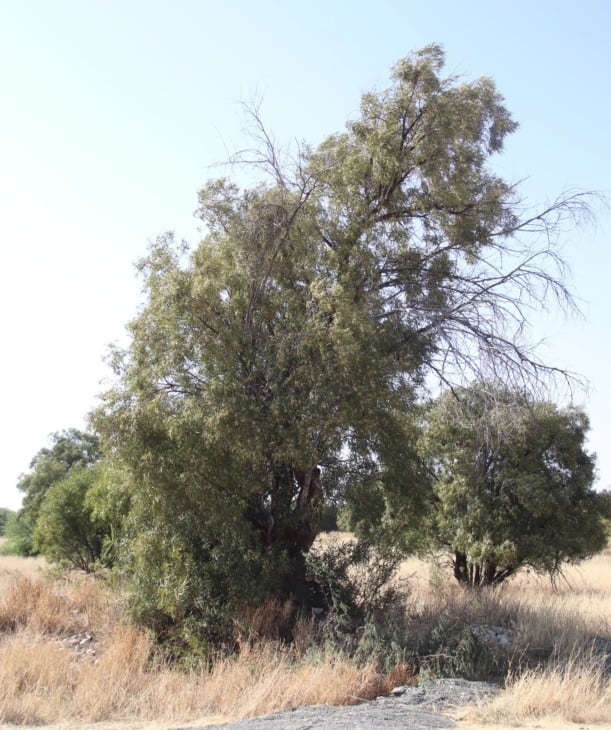
The African Sumac tree is an incredibly hardy evergreen that can survive long periods without water.
This tree found throughout the desert southwest but is most common in the Sonoran Desert. It prefers light soils covered with gravel or exposed rocky outcrops, making it ideally suited to growing as a potted plant. This small tree has bright-green leaves which are about an inch long. The tree trunk is thin, with contorted branches that are somewhere between gray and brown in coloration.
2. American Arborvitae (thuja occidentalis)
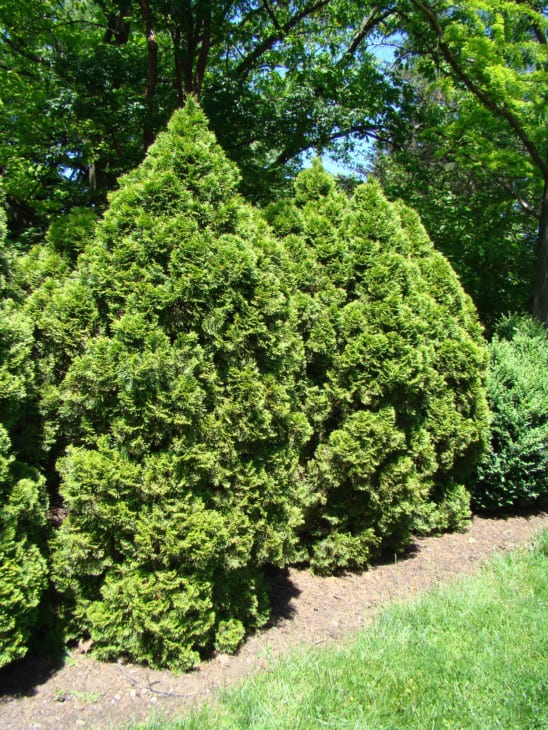
The American Arborvitea, also known as the Northern White Cedar, is a tall evergreen conifer that can grow up to 80 feet tall. It has green-colored cones that are about an inch in length. This tree thrives along stream banks and riverbeds, where it can easily get 6-8 inches of annual rainfall.
The trees are wind tolerant and can even live through dense forest fires. While the density of the wood is considered to be very high, it is not durable enough for construction nor does it make good firewood. This tree thrives in USDA Hardiness Zones 3 through 7 where soil fertility levels are low and rainfall averages between 20-30 inches a year.
3. Arizona Cypress (cupressus arizonica)
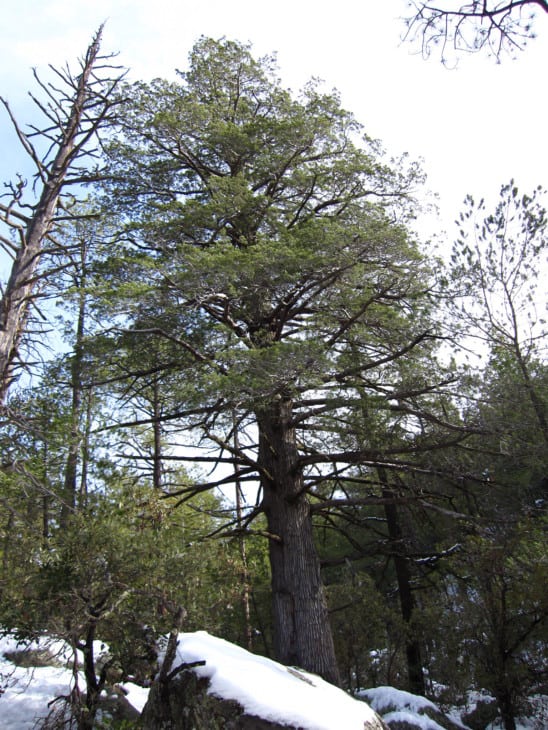
Native Americans have long known about the benefits of using the Arizona Cypress, also known as the Blue Nugget, for medicinal purposes. This tall evergreen can grow up to 60 feet tall and has needles that are flat rather than round. The bark is reddish-brown in coloration, with rough ridges that create diamond shaped patterns across its surface.
Arizona Cypress trees produce a highly scented resin that can be used to treat coughs and colds, while the leaves and twigs can be steeped in boiling hot water to make a fever reducing tea. Native Americans use the leaves and needles for making fire-starting bundles that create hot coals, while the roots are dried and used in a variety of applications.
4. Mulga (acacia aneura)
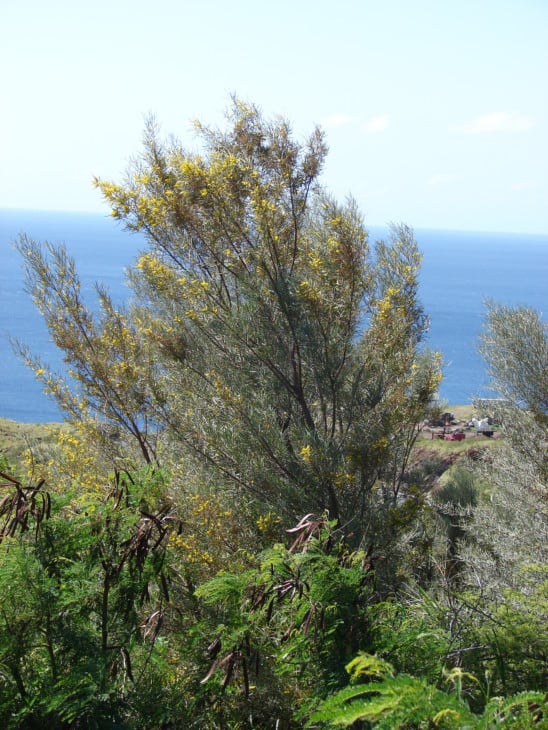
The Mulga tree is found throughout Africa, Asia, the US and Australia. It is considered to be a small tree that can grow up to 30 feet tall with long brownish-green flowers that are about three-quarters of an inch in length. It has compound leaves with slender green thorns covering its branches, which are covered in dense foliage.
This tree thrives in dry areas where the soil is rocky and infertile. This tree has long spade-shaped root systems that can grow up to 35 feet deep, helping it find water during times of drought. It does best when planted alongside other evergreens like pines because its roots are shallow.
5. Texas Olive (cordia boissieri)
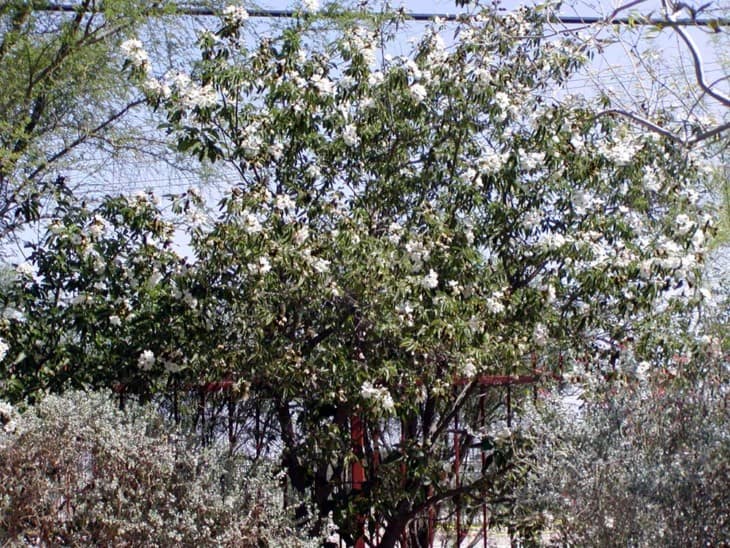
The Texas Olive tree is a medium-sized evergreen that can grow up to 40 feet tall on a single branch. It has narrow green leaves and produces white flowers with five petals from February through April. The fruit from the tree is edible, but the seeds inside have been known to cause serious health problems if eaten, so it’s best not to eat the fruit.
The Texas Olive tree is very drought tolerant, making it great for desert landscapes where water use needs to be reduced. It can survive on as little as 4 inches of rainfall a year. This evergreen thrives in USDA Hardiness Zones 9 through 11 where the average annual temperature is between 70-80 degrees Fahrenheit with lows averaging below 40 degrees Fahrenheit.
6. Arizona Madrone (arbutus arizonica)
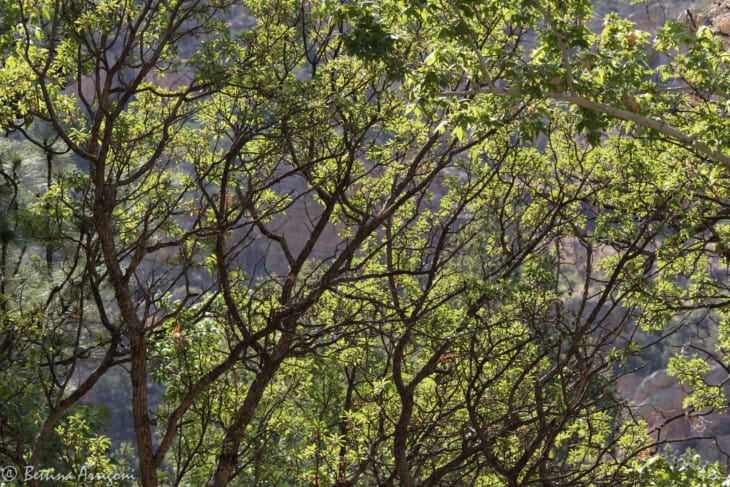
The Arizona Madrone is also known as the Strawberry Tree. It grows very slowly and is considered to be an evergreen small tree with a single straight trunk topped by contorted branches that are covered in reddish bark. The leaves of this tree change color throughout the seasons, from dark green during summer months to yellow or orange in autumn before they fall from the tree.
The Arizona Madrone produces bright red fruit that is poisonous to humans, but wildlife makes great use of it. The berries contain a high content of vitamin C and can be used to make jellies and jams. This evergreen thrives in USDA Hardiness Zones 3 through 10 where rainfall averages between 20-30 inches a year.
7. Rocky Mountain Juniper (juniperus scopulorum)
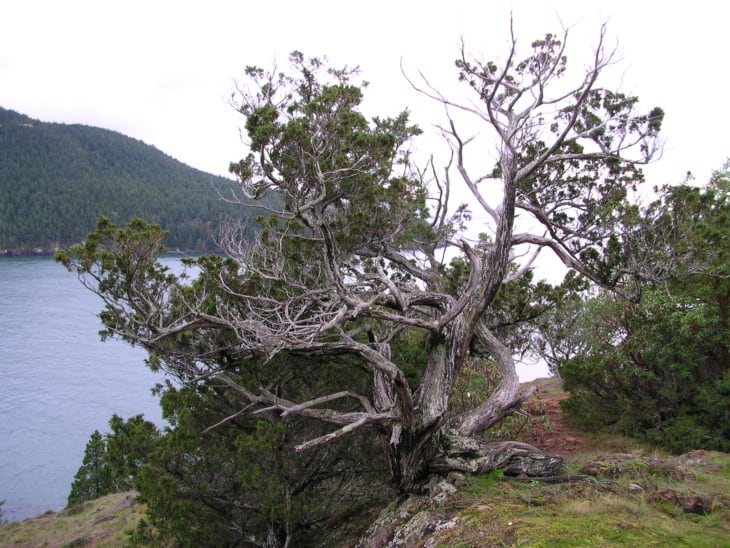
The Rocky Mountain Juniper is a slow-growing evergreen that can grow up to 40 feet tall. Its needles are short and waxy, giving them a blue tint that camouflages the tree in its environment. The bark of this evergreen is reddish brown and flaky, and the branches droop as they mature over time.
This tree has many uses for Native Americans. Its wood is used to construct tepees, while the bark contains a compound that can be converted into turpentine, which can be used in different applications. The needles of this tree are also edible and provide vitamin C to people who eat them.
8. Desert Ironwood (olneya tesota)
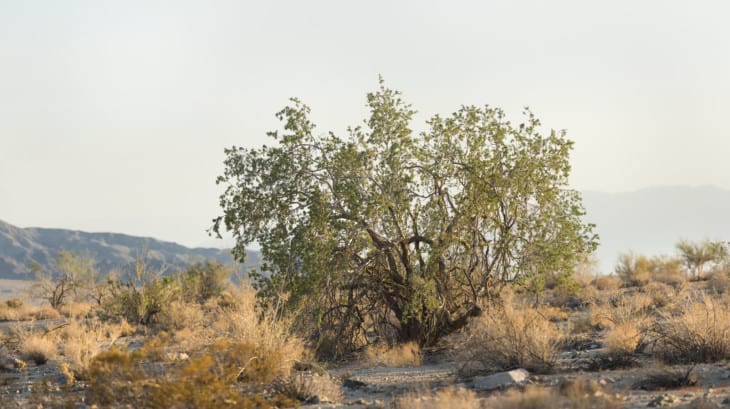
The Desert Ironwood is an evergreen tree that can grow up to 30 feet tall, with green leaves that are about 3/4 of an inch in length. It has creamy white bell-shaped flowers that turn into bright red berries. This tree thrives in areas where the soil is rocky and infertile, but it needs at least 6 inches of rainfall a year.
This slow-growing evergreen is considered to be the longest lived tree in North America, with one specimen living for 2,000 years. Many ancient specimens exist because this tree does not produce seeds until it is about 20 years old, so young trees are rarely seen. The wood of this tree can survive extreme temperatures, making it great for Arizona, and also contains compounds that are known to have anti-inflammatory properties.
9. Colorado Pinyon (pinus edulis)
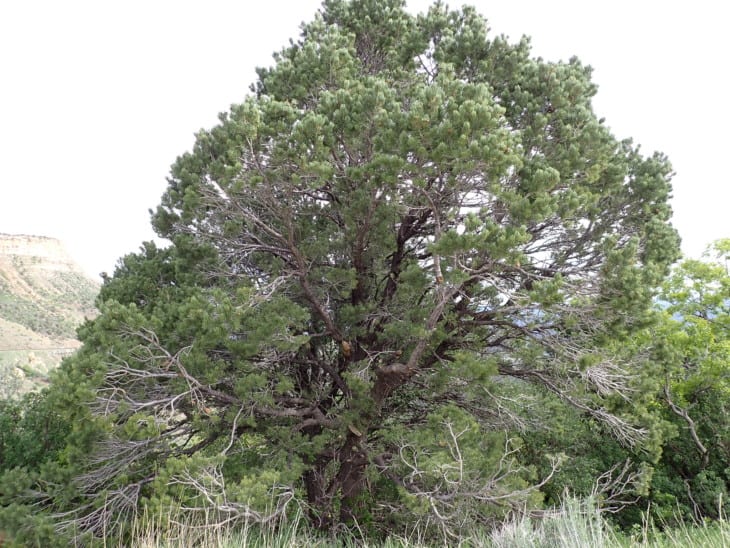
The Colorado Pinyon tree is a slow-growing evergreen that can reach up to 50 feet tall with twisted branches covered in short green needles. Male and female flowers grow on separate trees, which darken to grayish brown as they age. The male flowers produce pollen, while the female flowers produce the edible pine nuts that give this species its name.
Pine nuts are high in protein, fiber, and monounsaturated fatty acids, also known as “good fat.” This evergreen thrives in USDA Hardiness Zones 4 through 9 where the average annual temperature is between 45-65 degrees Fahrenheit.
10. Texas Ebony (ebenopsis ebano)
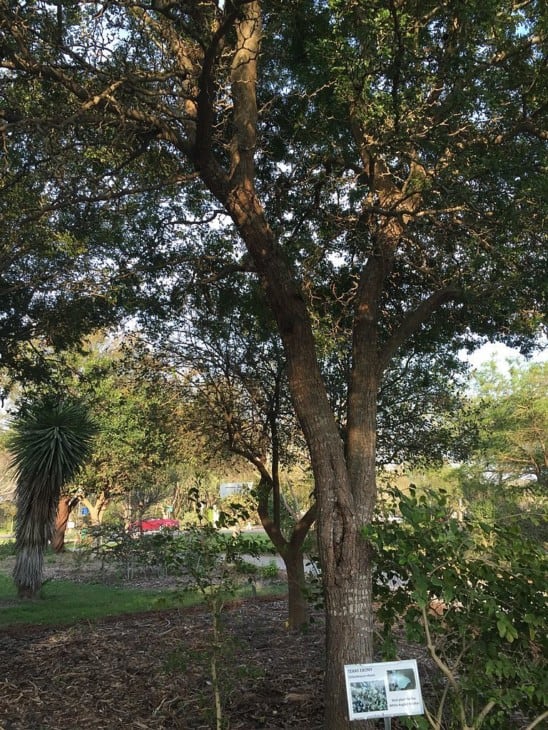
The Texas Ebony is an evergreen small tree that grows in height to about 30 feet tall and can spread up to 40 feet wide. It has dark green leaves that are covered in a waxy coating and turn grayish brown as they age. The bark of this tree contains chemicals known for treating cancer, inflammation, respiratory problems, and pain.
Texas Ebony is considered to be the most cold-tolerant ebony species in the world, withstanding temperatures of -20 degrees Fahrenheit. While it can tolerate desert conditions well, this tree requires at least 6 inches of rainfall per year to thrive.
This tree is threatened by habitat loss due to livestock grazing and agriculture. Wildlife uses this tree for food and shelter, while hunters use its wood to make hunting bows. The Texas Ebony has many potential medicinal applications, including the treatment of cancer, asthma, depression, high blood pressure, inflammation, sleep disorders and tuberculosis.
11. Honey Mesquite (prosopis glandulosa)
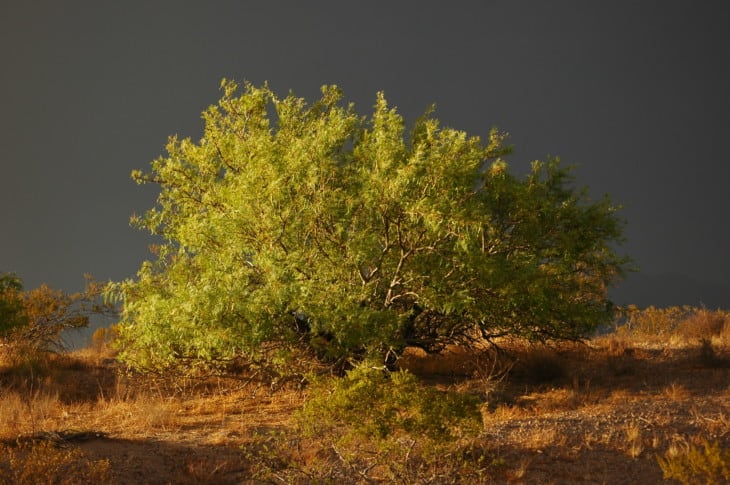
The Honey Mesquite is a dense evergreen that grows up to 30-40 feet tall and spreads about 50 feet wide. It has compound leaves that alternate up its stem, with four to eight pairs of small green leaflets on each leaf. The bark on the trunk is grayish brown and can grow up to one inch thick, while older branches are covered in small spines.
Honey mesquite is able to survive extended droughts because they are semi-deciduous trees, losing about half their leaves during summer months when water is scarce. This evergreen has many uses for Native Americans, with the bark being used to dye leather and the wood being used for building homes, tools, and even musical instruments.
This tree was considered a major food source for the native peoples of North America because its beans and pods were high in protein and can be eaten raw or dried and ground into flour. The wood is also used to make firewood as well as charcoal, while the bark contains chemicals known for treating pain and coughs.
12. White Fir (abies concolor)
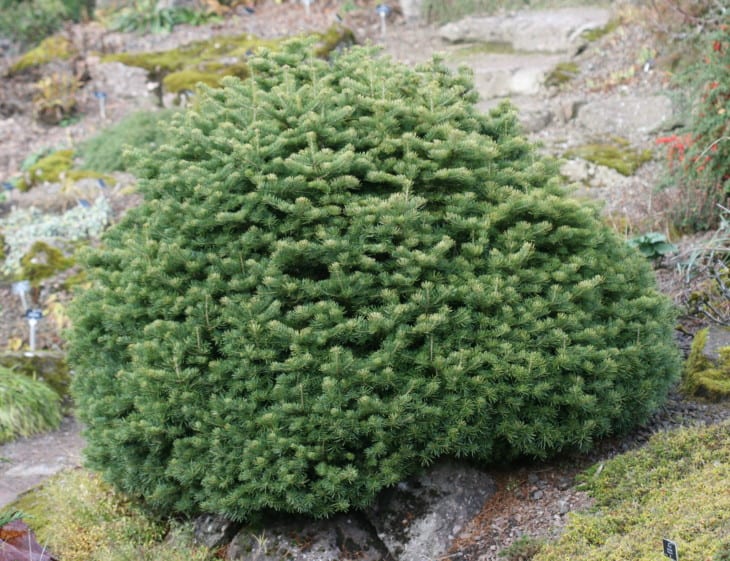
The White Fir is an evergreen that grows to be about 70-80 feet tall and spreads up to 50 feet wide. The tree has soft bluish green needles about one inch long with white undersides, giving the tree its name. The bark of this tree is grayish brown when it’s young but turns reddish brown as the tree matures.
The White Fir is very cold tolerant, withstanding temperatures of -40 degrees Fahrenheit. Because of this tree’s ability to grow in colder climates, it was used by many different Native American tribes for shelter and building material. The wood is also able to survive fires because the chemicals it contains are known for their fire-resistant properties.
13. Brazilian Pepper Tree (schinus terebinthifolia)
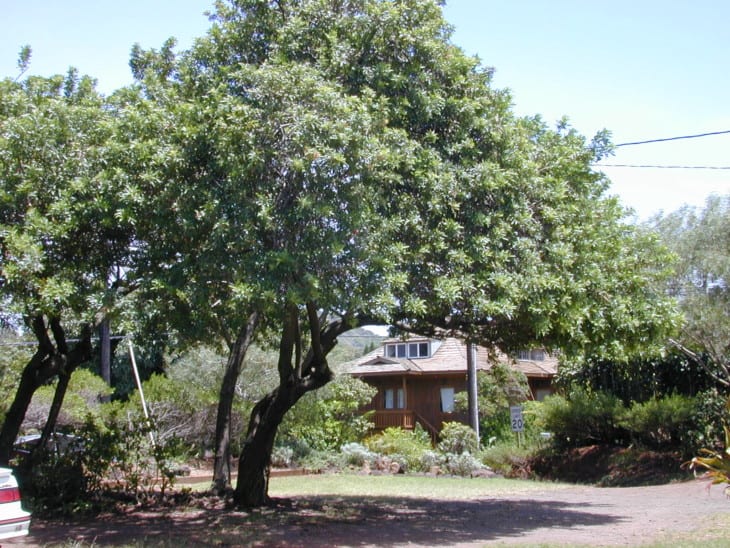
The Brazilian Pepper Tree is an evergreen that can grow up to 60-70 feet tall and spread 30-50 feet wide. It has alternate ovate leaves that are dark green but become reddish brown as they age. The leaves contain small glands where the pepper-like berries begin to form, giving this tree its name.
Brazilian Pepper Tree is considered a weed in some parts of the world, invading croplands and causing erosion. This tree grows best in USDA Hardiness Zones 8 through 11 where the average annual temperature ranges from 35-75 degrees Fahrenheit.
Brazilian Pepper Tree has many potential uses for humans, with its berries being used to make tea, jelly, and candy. Its wood contains chemicals known for treating pain, fever, and spasms while the oil of this tree is used to make medicine that treats skin infections, psoriasis, rheumatism, gout, and arthritis.

